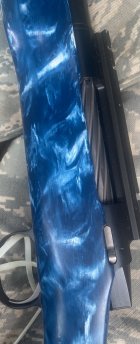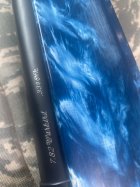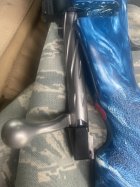You are using an out of date browser. It may not display this or other websites correctly.
You should upgrade or use an alternative browser.
You should upgrade or use an alternative browser.
Magnum not inherently less accurate?
- Thread starter davidjoe
- Start date
I have been talking to the friend who introduced me to centerfire shooting matches way back in the mid 00’s. Prior to that time, I labored under the misconception that once you determined a rifle was exceptionally accurate, you oiled and admired it frequently, and mainly kept it put away. I wondered how there could be soooo many components produced for sale, when there just aren’t that many things that need to be shot. Seemed crazy to me, but he eventually straightened me out and of course it all makes perfect sense and always has.
So of recent times, the same individual proposed that I might be interested in a certain rifle and its kit, such as bags of virgin brass, that he had acquired. He shot it five times, five rounds. The rifle shoots a proprietary cartridge called the “Warbird” by John Lazzeroni of Tucson. The rifle itself is a single shot McMillan Bros receiver in a flat bottom McMillan BR style stock, with a heavy brakeless barrel. The barreled action is black and barrel engraved in the uniform way that I only see on as-original, factory-custom work. It could easily date to a period when the McMillans worked closely together in Phoenix.
The cartridge adds about 900 FPS to a .308’s velocity on 168 weight class bullets. Interest in a gun with a story like that is the wrong word, something more along the lines of an event horizon relationship between me and gun is more appropriate.
So of recent times, the same individual proposed that I might be interested in a certain rifle and its kit, such as bags of virgin brass, that he had acquired. He shot it five times, five rounds. The rifle shoots a proprietary cartridge called the “Warbird” by John Lazzeroni of Tucson. The rifle itself is a single shot McMillan Bros receiver in a flat bottom McMillan BR style stock, with a heavy brakeless barrel. The barreled action is black and barrel engraved in the uniform way that I only see on as-original, factory-custom work. It could easily date to a period when the McMillans worked closely together in Phoenix.
The cartridge adds about 900 FPS to a .308’s velocity on 168 weight class bullets. Interest in a gun with a story like that is the wrong word, something more along the lines of an event horizon relationship between me and gun is more appropriate.
Attachments
-
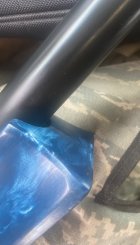 51D9246A-3E1C-406B-929C-F14B376376EA.jpeg271.1 KB · Views: 29
51D9246A-3E1C-406B-929C-F14B376376EA.jpeg271.1 KB · Views: 29 -
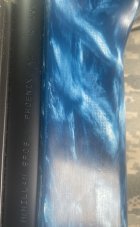 7A45B08E-8F98-4F6A-A76C-AB72533B6A17.jpeg326.2 KB · Views: 19
7A45B08E-8F98-4F6A-A76C-AB72533B6A17.jpeg326.2 KB · Views: 19 -
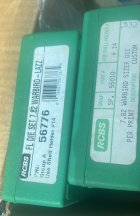 10E18BE1-DBDF-43BD-B220-94F8652CD791.jpeg277.7 KB · Views: 23
10E18BE1-DBDF-43BD-B220-94F8652CD791.jpeg277.7 KB · Views: 23 -
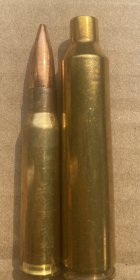 A71A7CFA-1839-4DAD-A0EE-CEF02F2EC42B.jpeg283.6 KB · Views: 23
A71A7CFA-1839-4DAD-A0EE-CEF02F2EC42B.jpeg283.6 KB · Views: 23 -
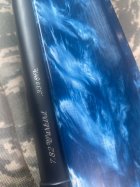 1634154289735.jpeg371.7 KB · Views: 26
1634154289735.jpeg371.7 KB · Views: 26 -
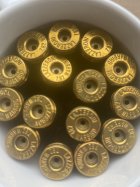 1634154328580.jpeg292.6 KB · Views: 26
1634154328580.jpeg292.6 KB · Views: 26
Last edited:
A couple more of that unique shroud and action profile. I just picked it up today. Can’t wait for the state midrange.
Attachments
Last edited:
Going back to experience, that is well known by many shooters. When considering the case of benchrest rifles shot free recoil on the usual rests/bags, it is well known that if a the rifle does not slide smoothly on the bags, if the bags are made sticky by humidity, or anything else, accuracy will suffer. You do not want it to hang up even a little. My question would be how could that be true if the rifle is not moving before the bullet leaves the barrel? Imaginings have made this much more difficult than it really is.
I don’t shoot BR but I’m aware that many of those guns weigh 10.5 pounds all in. I can appreciate that they are very sensitive in many regards relative to Open rigs, be it recoil, torque, load, trigger, harmonics, or other variable. I try to get even my .22 LR’s up to 17 or more, so, I follow. Some of my Open barrels by themselves are close to 12 pounds and spread 10kg weight over a very long wheelbase. I do also try to make sure they come straight back smoothly.
Last edited:
I’m calling in the think tank calvary once again. Independent of me, this question resurfaced on a thread about calculating barrel movement pre-exit. I have written several posts to it, all long, but the newest, perhaps hardest to resolve -paradox - I’m going to call it, is this one I posted last night.
As a warm up to accepting Erik’s $5,000 iron sight challenge, ring mental steel on this:
———————
A twist in the question might help answer the questions. Again, I’m not hiding the ball with the right answer, this has bugged me off and on for years.
Let’s modify the bullet / bolt hypothetical. Let’s take a 50 inch barrel and put two bullets an inch apart in the very middle of the barrel, facing opposite directions.
Install the zerk fitting. But instead of exactly equal bullets, have the longest bearing surface bullet, and the shortest, facing opposite directions.
Slowly start applying oil or air pressure. My theory is that the shorter bearing bullet will creep forward and fall out the barrel before the longer bullet starts moving much or at all even though it is not fixed in place.
If the longer bullet holds its ground such that it doesn’t move, or only does a little, then we really don’t need an entire gun to move from absorbing an equal and opposite force of the bullet moving down the barrel. The barrel acts more like a mere pressure vessel with two ends that have different resistance, but let the same “work” be done.
If the longer bullet moved a tiny amount, but the same work was being done on each side of the zerk fitting, then the barrel would not need to move at all, right? It would just sit there perfectly still while one bullet moved out toward the end, much faster than the other one.
And you see where I’d go with this thinking, if a barrel would sit perfectly still, then why wouldn’t a whole gun? Work is undoubtedly being done on the gun end, just look what we do to brass.
—————
So here’s the issue, I can’t see a barrel needing to move left or right whatsoever, as the pressure against the bullets slowly causes them to creep each way.
If we are going to say the gun moves, then does this hypothetical barrel? And if you say no to barrel, but yes to gun, then perhaps offer an explanation as to what distinguishes them.
As a warm up to accepting Erik’s $5,000 iron sight challenge, ring mental steel on this:
———————
A twist in the question might help answer the questions. Again, I’m not hiding the ball with the right answer, this has bugged me off and on for years.
Let’s modify the bullet / bolt hypothetical. Let’s take a 50 inch barrel and put two bullets an inch apart in the very middle of the barrel, facing opposite directions.
Install the zerk fitting. But instead of exactly equal bullets, have the longest bearing surface bullet, and the shortest, facing opposite directions.
Slowly start applying oil or air pressure. My theory is that the shorter bearing bullet will creep forward and fall out the barrel before the longer bullet starts moving much or at all even though it is not fixed in place.
If the longer bullet holds its ground such that it doesn’t move, or only does a little, then we really don’t need an entire gun to move from absorbing an equal and opposite force of the bullet moving down the barrel. The barrel acts more like a mere pressure vessel with two ends that have different resistance, but let the same “work” be done.
If the longer bullet moved a tiny amount, but the same work was being done on each side of the zerk fitting, then the barrel would not need to move at all, right? It would just sit there perfectly still while one bullet moved out toward the end, much faster than the other one.
And you see where I’d go with this thinking, if a barrel would sit perfectly still, then why wouldn’t a whole gun? Work is undoubtedly being done on the gun end, just look what we do to brass.
—————
So here’s the issue, I can’t see a barrel needing to move left or right whatsoever, as the pressure against the bullets slowly causes them to creep each way.
If we are going to say the gun moves, then does this hypothetical barrel? And if you say no to barrel, but yes to gun, then perhaps offer an explanation as to what distinguishes them.
Last edited:
I think a flaw in the thought process occurred when too quickly, many glossed over the qualifying language of the equal and opposite principle.
Those words, “when one object acts on another” were construed to be the rifle making the bullet fire, and the bullet therefore, acting on the rifle in the opposite direction.
The rifle did not make the bullet fire though, the powder did, and it performed the same work in both directions. (A person may ask, wouldn’t an explosion between two objects force them apart in opposite directions, yes, except in the case of a rifle, the structure itself, the barrel wall, connects the bullet to the bolt face, at the relevant period we are considering, which is pre-exit, holding together, the two objects the force is applied to.)
Slow the process down. Suspend a rifle from a string in the front and on the rear. Inside the rifle, substitute the powder for plain water trapped between the bolt and the bullet.
Imagine now that room temperature of the rifle is notched up a degree at a time and the water is slowly heated to a boil, we all know what’s going to happen.
The water is going to expand slowly, and the pressure it creates will ease the bullet into the lands, creeping down the barrel, until it is half in and half out, then all out, with a “pop”.
Who believes that as the rifle hangs from the strings while this is happening, in a near zero friction environment, it is going to slowly swing up and to its rear, as the bullet creeps down the barrel, such that the strings are no longer perpendicular to the ground? Not happening. (Take away gravity and set it on ball bearings, probably the same thing results, it’s perfectly still the entire time the bullet moves down the barrel, not moving backward at all, or at most what a clock would do as the pendulum swings, which is not recoil.).
I can see that swing happening the instant the bullet leaves the barrel, just like the moment a cork pops out of a champagne bottle, but I cannot envision a rifle doing this on its own when heated, before then. It remains one, still, closed system until exit.
I can envision its center of gravity moving forward with the bullet, and exerting slightly more force on the front string, but this is not recoil.
EDIT to add that with respect to the explosion between the bullet and bolt, if one were to urge the rifle does not know the difference between a passive bullet over powder and propelled grenade, or an undersized bullet that is not dragging the barrel forward, and why then that may not result in the gun matching the bullet’s forward momentum in the opposite direction while they are attached to each other, consider also that pushing against a grossly unequal mass will only result in the lighter object moving opposite its push; - the maximum exertion against a pickup by a man will return slight movement, but 1.5 X the same effort will not move a D11 even slightly. A man to a D11 more closely resembles the bullet to heavy gun ratio. If you were to run a barrel over a steel rod embedded in a concrete 4’x4’x4’ block of concrete and fire a blank, the gun is now the lighter object and the block will not move.
Punch holes in it. That’s why I wrote it.
Those words, “when one object acts on another” were construed to be the rifle making the bullet fire, and the bullet therefore, acting on the rifle in the opposite direction.
The rifle did not make the bullet fire though, the powder did, and it performed the same work in both directions. (A person may ask, wouldn’t an explosion between two objects force them apart in opposite directions, yes, except in the case of a rifle, the structure itself, the barrel wall, connects the bullet to the bolt face, at the relevant period we are considering, which is pre-exit, holding together, the two objects the force is applied to.)
Slow the process down. Suspend a rifle from a string in the front and on the rear. Inside the rifle, substitute the powder for plain water trapped between the bolt and the bullet.
Imagine now that room temperature of the rifle is notched up a degree at a time and the water is slowly heated to a boil, we all know what’s going to happen.
The water is going to expand slowly, and the pressure it creates will ease the bullet into the lands, creeping down the barrel, until it is half in and half out, then all out, with a “pop”.
Who believes that as the rifle hangs from the strings while this is happening, in a near zero friction environment, it is going to slowly swing up and to its rear, as the bullet creeps down the barrel, such that the strings are no longer perpendicular to the ground? Not happening. (Take away gravity and set it on ball bearings, probably the same thing results, it’s perfectly still the entire time the bullet moves down the barrel, not moving backward at all, or at most what a clock would do as the pendulum swings, which is not recoil.).
I can see that swing happening the instant the bullet leaves the barrel, just like the moment a cork pops out of a champagne bottle, but I cannot envision a rifle doing this on its own when heated, before then. It remains one, still, closed system until exit.
I can envision its center of gravity moving forward with the bullet, and exerting slightly more force on the front string, but this is not recoil.
EDIT to add that with respect to the explosion between the bullet and bolt, if one were to urge the rifle does not know the difference between a passive bullet over powder and propelled grenade, or an undersized bullet that is not dragging the barrel forward, and why then that may not result in the gun matching the bullet’s forward momentum in the opposite direction while they are attached to each other, consider also that pushing against a grossly unequal mass will only result in the lighter object moving opposite its push; - the maximum exertion against a pickup by a man will return slight movement, but 1.5 X the same effort will not move a D11 even slightly. A man to a D11 more closely resembles the bullet to heavy gun ratio. If you were to run a barrel over a steel rod embedded in a concrete 4’x4’x4’ block of concrete and fire a blank, the gun is now the lighter object and the block will not move.
Punch holes in it. That’s why I wrote it.
Last edited:
Or uncork a bottle !!David...I need an aspirin..
Mulligan
Silver $$ Contributor
Are you suggesting that a rifle does not recoil until the bullets exits the muzzle?I think a flaw in the thought process occurred when too quickly, many glossed over the qualifying language of the equal and opposite principle.
Those words, “when one object acts on another” were construed to be the rifle making the bullet fire, and the bullet therefore, acting on the rifle in the opposite direction.
The rifle did not make the bullet fire though, the powder did, and it performed the same work in both directions. (A person may ask, wouldn’t an explosion between two objects force them apart in opposite directions, yes, except in the case of a rifle, the structure itself, the barrel wall, connects the bullet to the bolt face, at the relevant period we are considering, which is pre-exit, holding together, the two objects the force is applied to.)
Slow the process down. Suspend a rifle from a string in the front and on the rear. Inside the rifle, substitute the powder for plain water trapped between the bolt and the bullet.
Imagine now that room temperature of the rifle is notched up a degree at a time and the water is slowly heated to a boil, we all know what’s going to happen.
The water is going to expand slowly, and the pressure it creates will ease the bullet into the lands, creeping down the barrel, until it is half in and half out, then all out, with a “pop”.
Who believes that as the rifle hangs from the strings while this is happening, in a near zero friction environment, it is going to slowly swing up and to its rear, as the bullet creeps down the barrel, such that the strings are no longer perpendicular to the ground? Not happening. (Take away gravity and set it on ball bearings, probably the same thing results, it’s perfectly still the entire time the bullet moves down the barrel, not moving backward at all, or at most what a clock would do as the pendulum swings, which is not recoil.).
I can see that swing happening the instant the bullet leaves the barrel, just like the moment a cork pops out of a champagne bottle, but I cannot envision a rifle doing this on its own when heated, before then. It remains one, still, closed system until exit.
I can envision its center of gravity moving forward with the bullet, and exerting slightly more force on the front string, but this is not recoil.
EDIT to add that with respect to the explosion between the bullet and bolt, if one were to urge the rifle does not know the difference between a passive bullet over powder and propelled grenade, or an undersized bullet that is not dragging the barrel forward, and why then that may not result in the gun matching the bullet’s forward momentum in the opposite direction while they are attached to each other, consider also that pushing against a grossly unequal mass will only result in the lighter object moving opposite its push; - the maximum exertion against a pickup by a man will return slight movement, but 1.5 X the same effort will not move a D11 even slightly. A man to a D11 more closely resembles the bullet to heavy gun ratio. If you were to run a barrel over a steel rod embedded in a concrete 4’x4’x4’ block of concrete and fire a blank, the gun is now the lighter object and the block will not move.
Punch holes in it. That’s why I wrote it.
CW
Are you suggesting that a rifle does not recoil until the bullets exits the muzzle?
CW
In the early posts above, an article was attached that stated that of the components of recoil, by far the largest was the nozzle or jet effect of material out of the muzzle.
My original assertion was that accelerated material leaving the system primarily or exclusively accounted for recoil.
I grant that in some videos, the chosen rifle and load appears to slightly recoil prior to exit. I question why the heavy guns we shoot in matches are not examined and i liken it to cherry picking picture groups, when the gun is either a sporter weight rifle or a cartridge that is on the order of a .416 or 50.
Litz measured a 1/50 of an inch movement. Truth is I can probably move a gun that far with a string on the 4 pound trigger and an empty chamber. The gun is probably going to “click” on the chamber while moving 1/50 of an inch.
I indeed do question whether a perfectly sealed barrel, that is not ejecting air forward of the bullet at 3,000 fps and is not leaking any blow by, has any physical reason to move backward before part of its mass separates, and the jet effect occurs.
There are no jet engines that trap their ejecta, and it’s that directed separation that is the equal and opposite reaction.
It is considered impossible for a floating astronaut to relocate himself by thrashing about in any manner, shifting weight or by reason of any other completely contained motion. On the other hand, a string of dental floss tied to the ship could allow him to ease entry to the craft when zero amount of strength or muscle that is fully contained can do so. Likewise, releasing some air pressure into space could propel him the other way. The bullet is completely contained before it exits, theoretically, even though we always see gas precede it in exit.
So, yes, I’ve absolutely questioned it. If I saw a cylinder, plugged at each end, start moving by itself, a typical shooter would say that could be caused by firing a bullet, and it need not ever have exited because recoil starts before exit. If that cylinder was in space, it will never stop. So, the notion of recoil before exit has invented a method of propulsion that only exists in the world of guns. We should share it with NASA.
Yes, I question it.
MikeRu
Gold $$ Contributor
Forces are equal and opposite.
F=MA.
Acceleration of the gun rearward is equal to the product of (Mass of bullet x Acceleration of bullet), all divided by Mass of gun (and add in some additional mass from the attached shooter). The gun/shooter starts accelerating at the exact same time the bullet does. That’s one of Newton’s Laws as someone noted above.
F=MA.
Acceleration of the gun rearward is equal to the product of (Mass of bullet x Acceleration of bullet), all divided by Mass of gun (and add in some additional mass from the attached shooter). The gun/shooter starts accelerating at the exact same time the bullet does. That’s one of Newton’s Laws as someone noted above.
Forces are equal and opposite.
F=MA.
Acceleration of the gun rearward is equal to the product of (Mass of bullet x Acceleration of bullet), all divided by Mass of gun (and add in some additional mass from the attached shooter). The gun/shooter starts accelerating at the exact same time the bullet does. That’s one of Newton’s Laws as someone noted above.
The gun and shooter do not start moving as soon as the bullet does, or it would not matter how heavy the rifle is.
A plane on the runway is a good example of the requirement that inertia be overcome before there is movement, the engines provide thrust for a considerable time before resting inertia is overcome and the plane begins to move.
At too low a thrust level, the engines would not move the plane at all, just like idle may or may not be sufficient to roll a car forward. The precise example is lifting a weight off a bench press, it will absorb all the force you want to apply less than its weight, and then finally moves the first millimeter upward, only when your force exceeds that weight.
Last edited:
Mulligan
Silver $$ Contributor
…. It’s thought that recoil would degrade accuracy. So it a magnum recoils significantly more while the bullet is confined to the barrel, there is more opportunity to move off target.
It is not apparent ti me, still, that the rifle should inherently recoil until there is separation (beyond readjusting center).
A MLB pitcher’s wind up and motion of throwing expends a lot of energy, like a bullet traversing a barrel, but if he doesn’t release the ball at the end, he doesn’t get that rearward impulse, and he will almost stumble forward from relying on the offset of it.
It is not apparent ti me, still, that the rifle should inherently recoil until there is separation (beyond readjusting center).
A MLB pitcher’s wind up and motion of throwing expends a lot of energy, like a bullet traversing a barrel, but if he doesn’t release the ball at the end, he doesn’t get that rearward impulse, and he will almost stumble forward from relying on the offset of it.
Last edited:
SteveOak
Gold $$ Contributor
In both examples you seem to be conflating cause and effect.
Regarding the rifle, what would be the result if the barreled action was removed from the stock and bolted into or otherwise captured by a fixture that (for the sake of discussion) did not permit any movement of the barreled action, similar to what Eley and Lapua do when testing ammo in a rimfire rifle? Think of an unlimited rest type barrel clamp, holding a barrel with no taper which bolted to a 100 ton base.
The pitcher almost stumbles forward because he is leaning into the pitch and follows through on the lean. He has to overcome the intertia of the ball.
The piece you seem to be missing is the burn of the powder exerts force in all directions and because the bullet is lighter it will move sooner and more than the rifle. The greater relative mass of the rifle and (if not shooting free recoil) the force exerted on the rifle by the shooter will dampen, mitigate, and delay the apparent movement of the rifle but the force of the expanding gasses is exerted on the rifle and bullet simultaneously.
Regarding the rifle, what would be the result if the barreled action was removed from the stock and bolted into or otherwise captured by a fixture that (for the sake of discussion) did not permit any movement of the barreled action, similar to what Eley and Lapua do when testing ammo in a rimfire rifle? Think of an unlimited rest type barrel clamp, holding a barrel with no taper which bolted to a 100 ton base.
The pitcher almost stumbles forward because he is leaning into the pitch and follows through on the lean. He has to overcome the intertia of the ball.
The piece you seem to be missing is the burn of the powder exerts force in all directions and because the bullet is lighter it will move sooner and more than the rifle. The greater relative mass of the rifle and (if not shooting free recoil) the force exerted on the rifle by the shooter will dampen, mitigate, and delay the apparent movement of the rifle but the force of the expanding gasses is exerted on the rifle and bullet simultaneously.
Pietro panama
Gold $$ Contributor
Suggestion: Google ‘free body diagrams‘ to see the basics of statics and dynamics.
Not confusing cause and effect. Keep in mind only recoil “pre-exit” is being scrutinized here. Everyone agrees on recoil at exit.
The machine rest absorbs the recoil impulse, it just doesn’t allow movement, placing stress on the parts.
The plane engine example is to show resting inertia prevents simultaneous recoil movement.
The bench press example is to show that in absolutely, black and white terms, applying insufficient force to an object does not equate to moving it, by a fractional amount.
The floating astronaut example is to demonstrate that a closed system cannot move itself, (I have acknowledged that a rifle is not a perfectly closed system, but conventional thinking is that there is pre exit recoil even if it is.)
The cylinder that appears to be a solid bar to an observer, that is concealing a barrel and round, which can somehow start moving absent any outside influence, or ejecta originating from it, is to show that we are assuming something is true, recoil before exit, that is outside conventionally accepted thought, in the broader than firearms applications.
The pitcher deciding late not to release the ball is to show that the body expects in the form of muscle memory a certain amount of recoil that did not occur, to remain balanced.
—
Of what I’d consider maybe the clearest example negating “inherent” recoil before exit, several posts up please read the example of a barrel, where pressure is applied via zerk fitting in its middle, to two opposing bullets of different weight.
The bullets will be slowly forced away from the middle, toward each end of the barrel. Pressure seeks out low, so equal work will be done, though the bullets will not move similar distances, and the barrel has no need to shift either right or left, while they are both moving.
Conceptually, keep lengthening the right hand bullet until it doesn’t move at all.
That doesn’t mean no work was done, but now it’s just mechanical stress on parts occurring, exactly like your machine rest reference.
So, if the barrel need not have moved left or right with the zerk fitting example, clear through to the ultra long bullet, well now we are talking about a rifle, and No barrel movement.
The other thread’s poser, who I have know familiarity with, touched on centering up, I believe completely separate from this, which if the bullet doesn’t exit, is all that must be accounted for.
The machine rest absorbs the recoil impulse, it just doesn’t allow movement, placing stress on the parts.
The plane engine example is to show resting inertia prevents simultaneous recoil movement.
The bench press example is to show that in absolutely, black and white terms, applying insufficient force to an object does not equate to moving it, by a fractional amount.
The floating astronaut example is to demonstrate that a closed system cannot move itself, (I have acknowledged that a rifle is not a perfectly closed system, but conventional thinking is that there is pre exit recoil even if it is.)
The cylinder that appears to be a solid bar to an observer, that is concealing a barrel and round, which can somehow start moving absent any outside influence, or ejecta originating from it, is to show that we are assuming something is true, recoil before exit, that is outside conventionally accepted thought, in the broader than firearms applications.
The pitcher deciding late not to release the ball is to show that the body expects in the form of muscle memory a certain amount of recoil that did not occur, to remain balanced.
—
Of what I’d consider maybe the clearest example negating “inherent” recoil before exit, several posts up please read the example of a barrel, where pressure is applied via zerk fitting in its middle, to two opposing bullets of different weight.
The bullets will be slowly forced away from the middle, toward each end of the barrel. Pressure seeks out low, so equal work will be done, though the bullets will not move similar distances, and the barrel has no need to shift either right or left, while they are both moving.
Conceptually, keep lengthening the right hand bullet until it doesn’t move at all.
That doesn’t mean no work was done, but now it’s just mechanical stress on parts occurring, exactly like your machine rest reference.
So, if the barrel need not have moved left or right with the zerk fitting example, clear through to the ultra long bullet, well now we are talking about a rifle, and No barrel movement.
The other thread’s poser, who I have know familiarity with, touched on centering up, I believe completely separate from this, which if the bullet doesn’t exit, is all that must be accounted for.
Last edited:
The gun and shooter do not start moving as soon as the bullet does, or it would not matter how heavy the rifle is.
To paraphrase the infamous Vincent Gambino... "Perhaps the laws of physics cease to exist on your (gun)"
The gun/shooter will recoil a distance proportional to their mass in relation to the mass being accelerated in the opposite direction. The more mass of the gun and less mass of the projectile, the less distance the gun will move by a given accelerating force. It may be small but it will move. I think you do understand this, David, as I know you are rather intelligent. I'm not sure exactly what you are questioning.
Upgrades & Donations
This Forum's expenses are primarily paid by member contributions. You can upgrade your Forum membership in seconds. Gold and Silver members get unlimited FREE classifieds for one year. Gold members can upload custom avatars.

Click Upgrade Membership Button ABOVE to get Gold or Silver Status.
You can also donate any amount, large or small, with the button below. Include your Forum Name in the PayPal Notes field.
To DONATE by CHECK, or make a recurring donation, CLICK HERE to learn how.

Click Upgrade Membership Button ABOVE to get Gold or Silver Status.
You can also donate any amount, large or small, with the button below. Include your Forum Name in the PayPal Notes field.
To DONATE by CHECK, or make a recurring donation, CLICK HERE to learn how.










